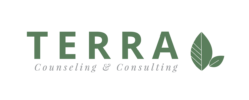 This post is just an article dump of a few recent readings I’ve enjoyed, with metaphors mixed in. It secondarily adds to the twenty by twenty challenge, if interested.
This post is just an article dump of a few recent readings I’ve enjoyed, with metaphors mixed in. It secondarily adds to the twenty by twenty challenge, if interested.
A close encounter with multi-colored threads is anarchy–chaotic and free
form. But from a distance, the emergence of shapes and the convergence of colors create structured images…tapestries.
Since last week’s post initiated our journey into word associations, here’s one of my favorite associations with the word tapestry:
Butler: [Answering door] Yes?
Indiana Jones: [In Scottish accent] Not before time! did you intend to leave us standing on the doorstep all day? we’re drenched
[sneezes in butler’s face]
Indiana Jones: Now look, I’ve gone and caught a sniffle
Butler: Are you expected?
Indiana Jones: Don’t take that tone with me my good man! Now buttle off and tell Baron Brunwald that Lord Clarence McDonald and his lovely assistant
[Drags Elsa towards him]
Indiana Jones: are here to view the tapestries
Butler: Tapestries?
Indiana Jones: The old man is dense, this is a castle isn’t it? there are tapestries
Butler: This is a castle and we have many tapestries, and if you are a Scottish lord then I am Mickey Mouse!
Indiana Jones: How dare he?
[punches butler in face]
–The Last Crusade
Who doesn’t like tapestries when they’re paired with dusty fedoras and boyish wit? It’s better than the usual effeminate associations.
Another association with tapestries is what I like to call “tapestry moments”. Those moments where extraneous details converge and eerily make sense together to form a bigger, connected picture. This happened recently with some seemingly extraneous details in my blog posts. I found an interesting article on personality questionnaires that suddenly forced these details from previous posts to converge:
The article is about Joan Didion, who inspired my musing on surrender. She’s responding to a questionnaire made famous by Marcel Proust, referenced in my post on beauty with his prologue quote. And that questionnaire, referenced in this article with creative repurposing, represents a Victorian version of personality assessments, ones that are essential to our work at Wellspring.
Furthermore, one of the points made on the questionnaire is useful to the twenty by twenty challenge: “Which words or phrases do you most overuse?”
As you’re working your way through the “reading list,” you may have noticed unexpected, surprising, and possibly emotional associations have emerged. If so, you’re on the right track.
In the same way, the associations you have with your well-worn words are significant. Those favorited words that we over-use represent a particular angle from which we view the world, as well as a set of positive reinforcements we’ve received for using them (a nod, a smile, increased interest in conversation, etc.). They’re carefully chosen and intentional, and often well-received, which reinforces their value to speaker and audience alike. Plus, they’re contagious. We have all enhanced our vocabularies from stealing others’ favorite words. This is why the best readers often make the best writers. They’re born to plagiarize. In the best possible way, of course.
Noticing your favorited words could be a way to deepen the benefit gained from the reading challenge. How do your associations with your over-used words fit with the emerging themes of twenty by twenty? How do the connections converge with other associations to create a significant theme, or life theme?
My takeaway about the extraneous details that converged in the Didion/Proust article?
Tapestry moments are. You can miss them or you can spot them, but they’re tangible nonetheless. If you do spot them, what next?
Oh, and by the way, for those “Fall reading list” followers who favor old, dusty books, check out the chemical romance that inspires this affinity.
